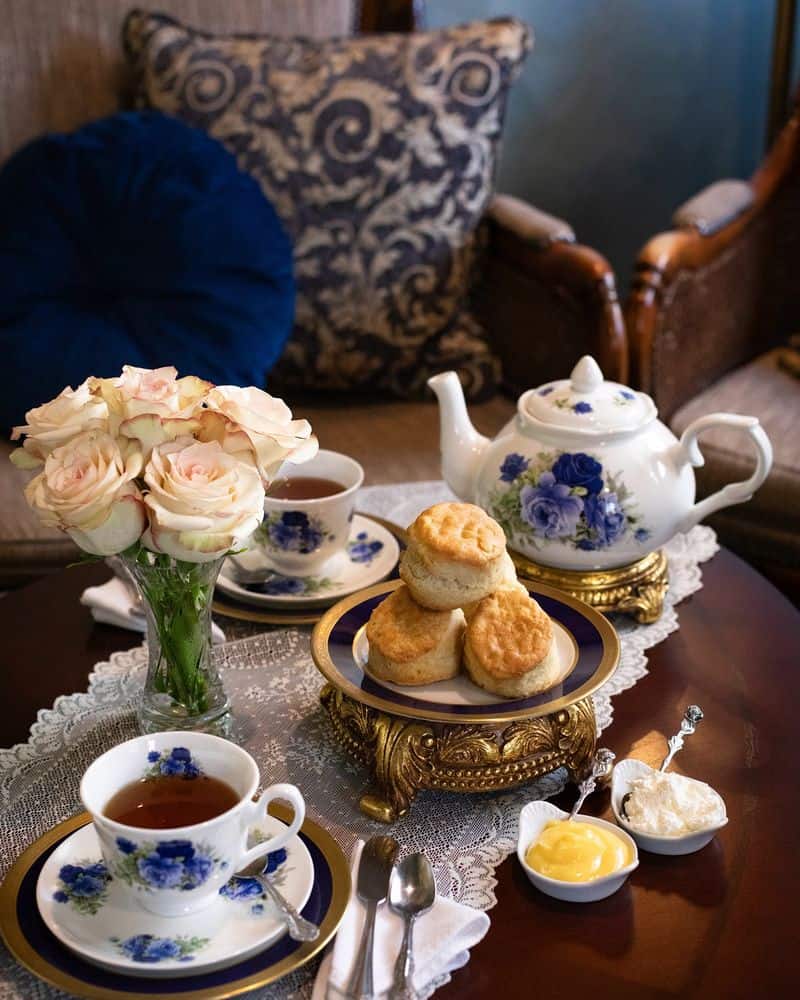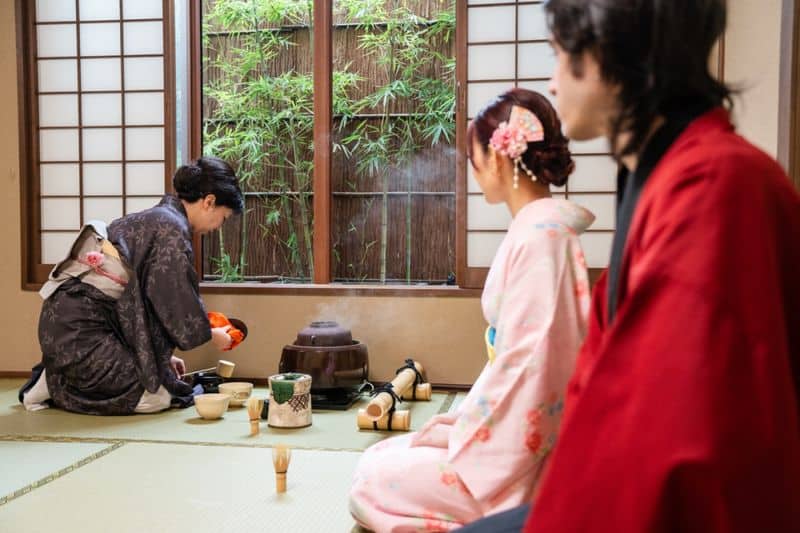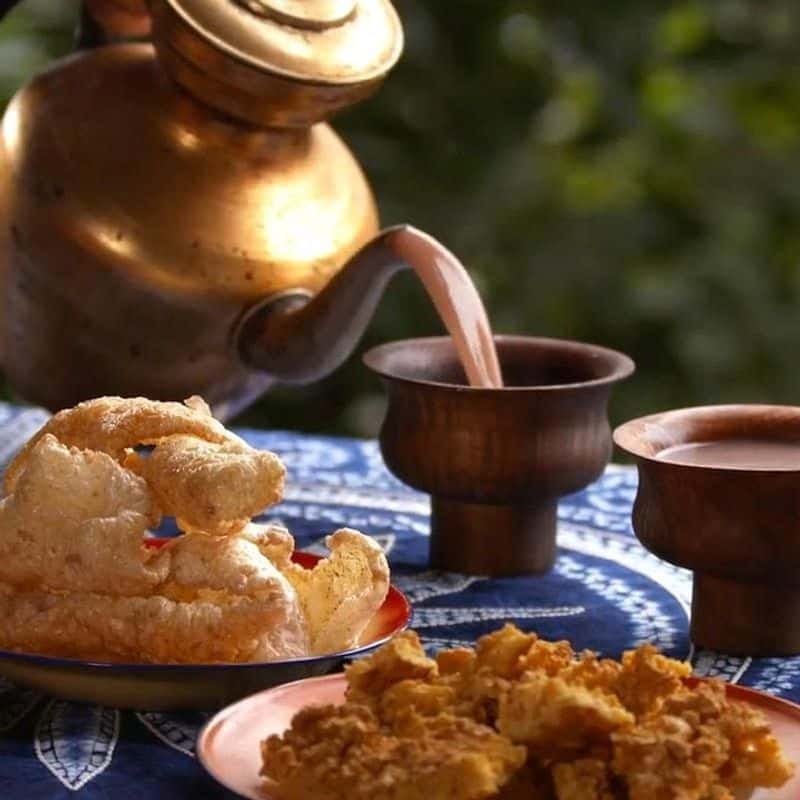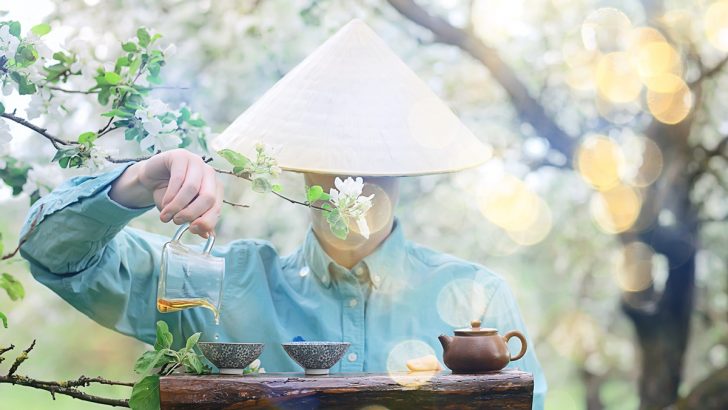Tea isn’t just a drink – it’s a cultural experience that brings people together across the globe.
From ornate ceremonies that take years to master to simple daily rituals that mark the rhythm of life, tea connects us to traditions thousands of years old.
Let’s explore how this humble leaf transforms into a magical experience in different corners of our world!
1. British Afternoon Tea: Pinkies Up!

Fancy china, tiered cake stands, and the gentle clink of teaspoons – welcome to British afternoon tea! Born when Duchess Anna of Bedford got hungry between meals in the 1840s, this delightful tradition turned tea-drinking into a social event.
Expect delicate finger sandwiches (cucumber is a must), warm scones with clotted cream and jam, and bite-sized pastries that look too pretty to eat. The great debate: cream first or jam first on your scone?
Whether at a posh hotel or a cozy cottage, afternoon tea remains Britain’s most civilized excuse to eat cake at 4 o’clock.
2. Japanese Tea Ceremony: The Way of Tea

Imagine a ritual so precise that even the way you turn your teacup matters! Japan’s chado (“the way of tea”) elevates tea drinking to a meditative art form where every movement carries meaning.
The tea master kneels gracefully on tatami mats, using choreographed motions to prepare matcha – that vibrant green powder whisked into frothy perfection. Guests admire the seasonal flower arrangement and calligraphy scroll before savoring the bitter-sweet matcha and traditional sweets.
What looks simple actually takes decades to master, as practitioners seek harmony, respect, purity, and tranquility in each perfect bowl.
3. Moroccan Mint Tea: The Whisper of Hospitality

“The first glass is as gentle as life, the second is as strong as love, the third is as bitter as death.” So goes the Moroccan saying about their famous mint tea ritual – a symbol of hospitality you simply cannot refuse!
Watch as your host performs the theatrical pour, raising the ornate silver teapot high above colorful glasses to create a frothy crown. The sweet concoction of gunpowder green tea, fresh mint sprigs, and generous sugar cubes is brewed three times, changing character with each serving.
Refusing this offering? Absolutely unthinkable in Moroccan culture where tea seals friendships and business deals alike!
4. Russian Samovar: The Soul-Warming Centerpiece

Gather ’round the samovar – that gleaming, urn-shaped contraption that’s been the heart of Russian tea culture since Catherine the Great’s time! These metal marvels work like self-contained brewing systems, keeping water piping hot for hours through cold Russian winters.
Russians don’t mess around with weak tea. They brew zavarka – a tea concentrate so strong you need to dilute it – then sweeten it with jam rather than sugar! Add a slice of lemon, never milk.
The samovar doesn’t just make tea; it creates a cozy atmosphere called “chaepitie” where friends share gossip, solve problems, and warm both hands and hearts.
5. Tibetan Butter Tea: High-Altitude Energy Brew

Yak butter in tea? Absolutely! At 16,000 feet above sea level, Tibetans have crafted the perfect high-calorie fuel for life in the Himalayas – po cha, or butter tea.
This unusual concoction starts with brick tea (compressed tea leaves) boiled for hours, then churned with rancid yak butter and salt in a wooden cylinder called a chandong. The result? A thick, soup-like beverage with a distinctive taste that’s definitely an acquired one for Western palates!
Hosts continuously refill your cup (never emptying it completely signals you’ve had enough), as this rich, fatty brew provides essential calories and prevents chapped lips in the harsh mountain climate.
6. Chinese Gongfu Ceremony: Tea With Effort

“Small pot, good tea, multiple infusions” – that’s the essence of China’s gongfu tea ceremony, where the name literally means “making tea with skill and effort.” Unlike quick Western brewing, this ritual celebrates slowness and attention to detail.
First, tiny clay teapots are warmed and tea leaves awakened with a rinse. Each steeping lasts mere seconds, producing thimble-sized cups of intensely flavored tea. The real magic? The same leaves produce multiple infusions, each revealing different flavor notes.
Tea lovers gather around a special brewing tray with dedicated tools – tea pets (clay figurines that change color with tea) often join the fun as good luck charms!
7. Indian Masala Chai: The Roadside Symphony

The rhythmic sound of boiling milk hitting tea, the aromatic cloud of cardamom and ginger, the cheerful call of “Chai! Chai!” – India’s tea culture plays out on every street corner through its chaiwallas (tea vendors).
Forget those sugary chai lattes! Authentic masala chai combines strong black tea with milk, sugar, and a personalized blend of spices – usually cardamom, ginger, cinnamon, cloves, and black pepper. The ingredients dance together as they’re boiled (never steeped!) in a small metal pot.
Served in small clay cups called kulhads that get smashed after use, this sweet, spicy brew fuels conversations, business deals, and daily life across the subcontinent.
8. Argentinian Mate Circle: The Gourd of Friendship

“Would you like some mate?” isn’t just an offer of a beverage in Argentina – it’s an invitation into a sacred social circle. This caffeine-packed herbal infusion isn’t even technically tea, but don’t tell that to the passionate South Americans who structure their days around it!
The ritual is wonderfully communal: dried yerba mate leaves fill a hollowed gourd, hot (never boiling) water is added, and everyone sips through the same metal straw (bombilla). The gourd travels clockwise, refilled for each person by the cebador (server).
Saying “gracias” when handed the mate is a rookie mistake – it means you’re done drinking!
9. Turkish Çay: The Never-Empty Glass

Red as a ruby and served in tulip-shaped glasses you can warm your fingers on – Turkish çay (pronounced chai) is practically the national drink! The distinctive double-stacked çaydanlık teapot creates the perfect brew: strong tea concentrate in the top chamber, boiling water below.
Turks consume more tea per person than any nation on earth, offering it everywhere from business meetings to barber shops. The tiny, curved glasses showcase the tea’s crimson color while the narrow waist keeps it hot longer.
Sugar cubes are added directly to the glass (never milk!), and refusing a refill is nearly impossible – expect to drink at least three glasses during any visit!
10. Senegalese Attaya: Three Cups of Wisdom

“The first cup is bitter like life, the second sweet like love, and the third mild like death.” This Senegalese saying captures the philosophy behind attaya – a three-round tea ceremony that transforms both the tea and the participants.
Using Chinese gunpowder tea, sugar, and sometimes mint, the ritual can stretch for hours as the tea master creates dramatic pours between glasses, creating a frothy head called the “crown” of the tea. The foam matters as much as the liquid!
Each round uses the same leaves but varies in strength and sweetness, symbolizing life’s journey. Patience is essential – rushing attaya is like rushing through life itself.

